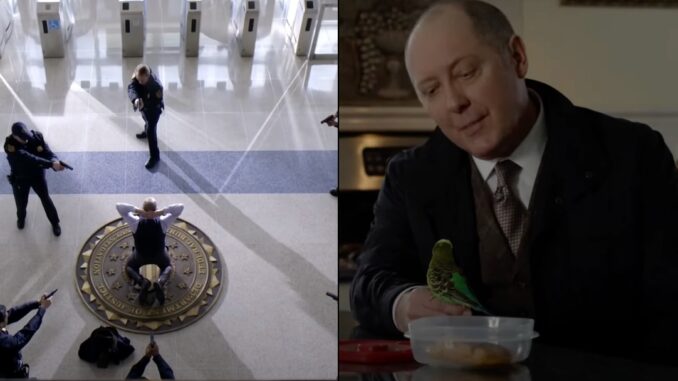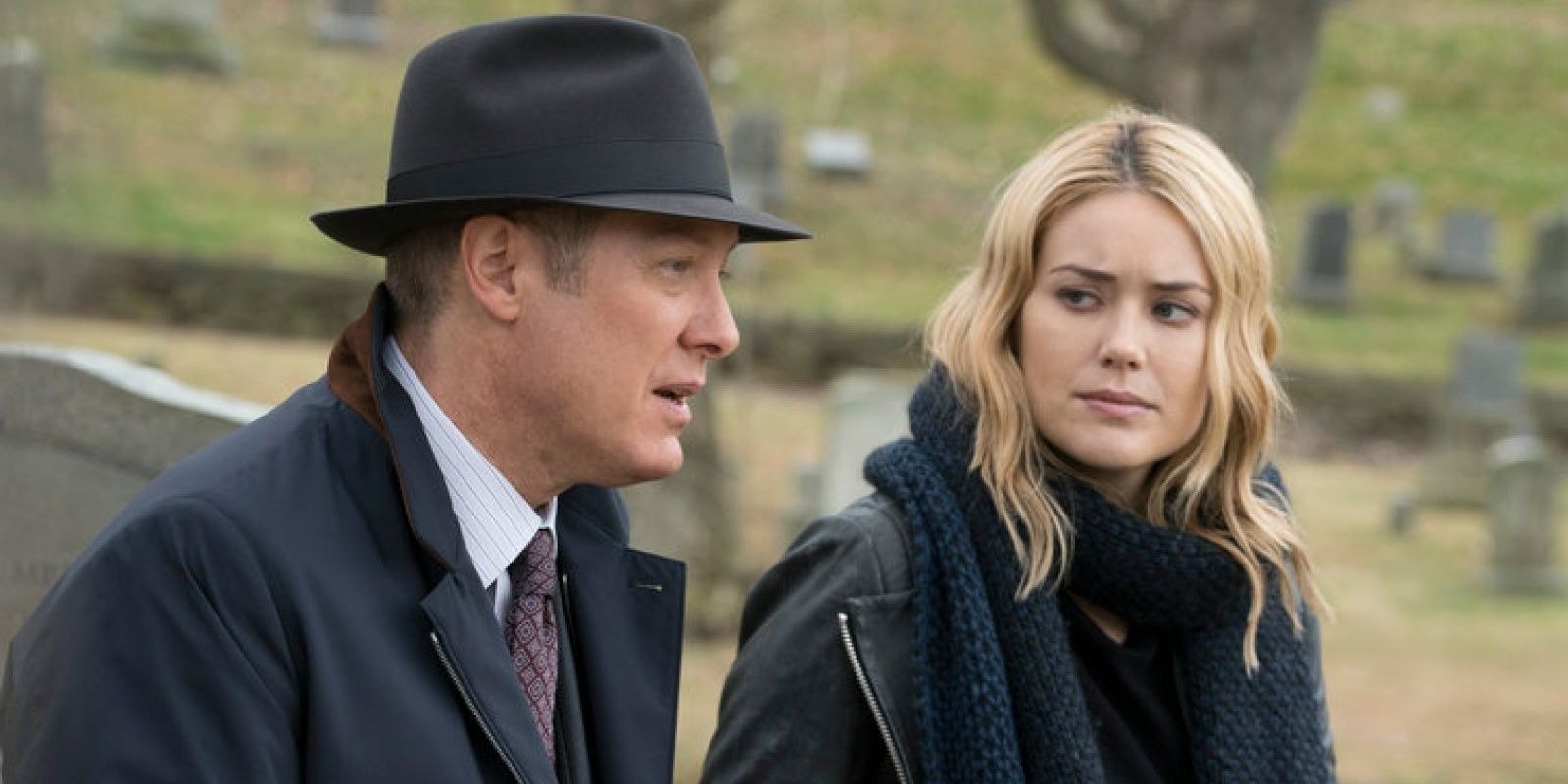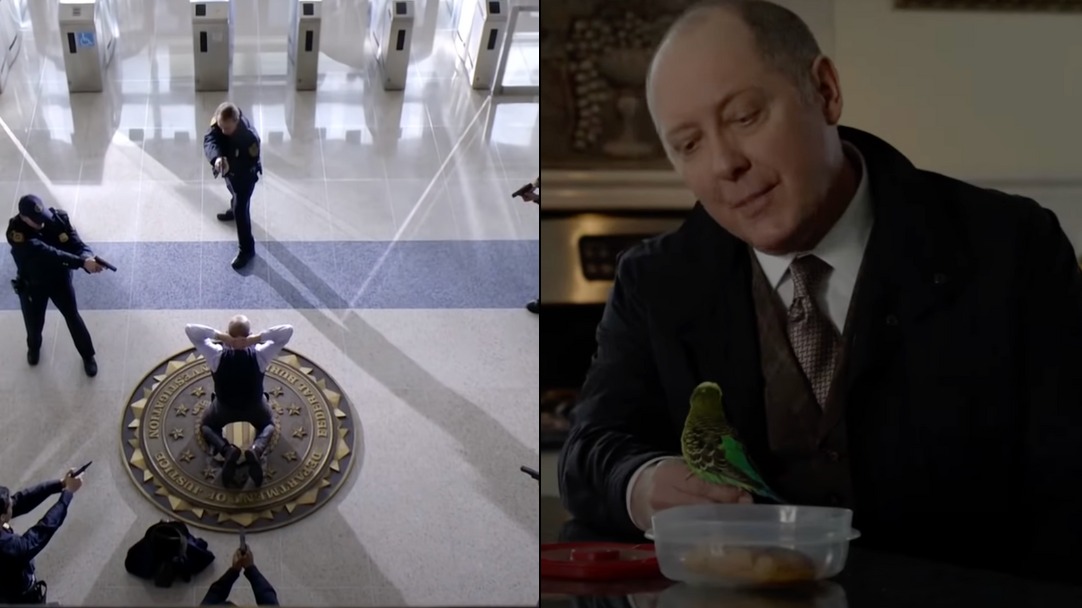
The Blacklist blends cerebral crime-solving with a cat-and-mouse narrative that pushes the limits of trust, loyalty and identity. Premiering in 2013 and running for 10 riveting seasons, the NBC crime drama became a cultural phenomenon. It is anchored by a stellar performance from James Spader as the enigmatic criminal mastermind Raymond “Red” Reddington. With a certified fresh 91% rating on Rotten Tomatoes, The Blacklist is more than just another procedural. It’s a high-concept thriller laced with espionage and psychological tension.
Red is a morally ambiguous hero who redefined what it means to be an antihero on network television. For fans of intelligent crime fiction, twist-filled storytelling, and morally complex characters, The Blacklist is essential viewing. The series doesn’t just solve crimes. Instead, it builds a labyrinthine mythology filled with secret alliances, shadowy organizations, and personal betrayals. Spader’s dazzling performance and the show’s commitment to long-form storytelling make The Blacklist a masterclass in blending serialized drama with a weekly procedural structure.
The Antihero at the Center: James Spader’s Defining Role
Why Raymond Reddington Is One of TV’s Most Compelling Criminal Masterminds
It’s impossible to talk about The Blacklist without putting James Spader front and center. Spader’s portrayal of Red is a career-defining role that combines charisma, menace, vulnerability and intellect in a way that few actors can achieve. A former high-ranking naval officer turned international fugitive, Reddington, voluntarily surrenders to the FBI with an offer. He will help them catch the world’s most dangerous criminals for immunity and the condition that he only works with rookie profiler, Elizabeth Keen (Megan Boone).
Spader delivers Reddington as a man of contradictions. He’s a ruthless killer who quotes poetry. A sentimental romantic who orders hits without blinking. His intelligence is razor-sharp, his motives always cloaked in ambiguity, and his loyalty? Entirely his own. What makes Spader’s performance, so hypnotic is his ability to alternate between charm and menace, often within the same scene. This duality turns Red into a gravitational force around which the rest of the show orbits. Unlike many crime shows where the protagonist is a detective chasing bad guys, The Blacklist flips the formula: Red is a criminal, helping catch even worse ones.
Spader’s delivery is masterfully unpredictable, infusing even the quietest moments with a subtle tension that keeps viewers on edge. Whether he’s recounting an old war story or issuing a chilling threat, Red always commands attention. His signature monologues are often the highlight of each episode, adding layers of mystique to an already enigmatic figure. Few actors could balance the emotional weight and theatrical flair that the role demands, but Spader thrives in the space between sincerity and deception. Reddington is a walking paradox who makes moral ambiguity not only palatable but fascinating.

A Unique Blend of Procedural and Serialized Storytelling
The Blacklist’s Most Distinctive Strength Lies in Its Hybrid Narrative Structure
Each episode typically focuses on a new criminal from Reddington’s “blacklist.” It is a catalog of corrupt politicians, rogue agents, arms dealers and criminals that traditional law enforcement can’t touch. This procedural component satisfies the viewer’s appetite for weekly resolution and suspense. Beneath that framework lies a deeper, more intricate serialized plot about conspiracies, hidden identities, and a mysterious criminal organization known as The Cabal.
The Blacklist rewards long-term viewing with ever-deepening character development and a mythology that keeps evolving. The mystery surrounding Elizabeth Keen’s true parentage, Reddington’s motives, and the secret war between intelligence agencies are not merely background noise. Instead, they drive the emotional and narrative arcs of the entire series.
This combination keeps the show fresh, allowing for both high-stakes emotional drama and white-knuckle procedural action in equal measure. Most “blacklisters” often tie back to the overarching plot in some crucial way, turning what could have been a standard villain-of-the-week format into a meticulously crafted puzzle. Unlike most procedurals that reset the status quo at the end of each episode, The Blacklist thrives on continuity.
Major developments, such as character deaths, betrayals, and revelations, have lasting consequences that ripple throughout the series. This creates a sense of urgency and stakes that elevate even the most routine cases. Viewers are drawn in not just by the mystery of the week, but by the larger puzzle involving Reddington’s identity, the secretive underworld he operates in, and how it all connects back to Keen’s mysterious past. It’s a rare procedural where every detail matters, and everything is connected.
Character Dynamics That Evolve Over a Decade
The Emotional Cost of Loyalty and Deception
At the heart of The Blacklist is the complicated relationship between Reddington and Elizabeth. What begins as a mentor-protege dynamic slowly morphs into something far more tangled. The show spends ten seasons probing the nature of their connection, challenging viewers to question Reddington’s true intentions while watching Keen evolve from a naive profiler to a hardened investigator navigating her own moral gray zones.
The supporting cast adds additional layers of complexity. Diego Klattenhoff’s Agent Ressler serves as the show’s moral compass, often butting heads with Red’s methods. Harry Lennix’s Harold Cooper leads the task force with gravitas, trying to balance justice with the messy reality of working alongside a criminal. Amir Arison’s Aram brings technical expertise and humanity, while later characters, such as Samar Navabi (Mozhan Navabi) and Alina Park (Laura Sohn), flesh out the task force with unique perspectives and personal arcs.
The series excels at developing its ensemble cast in meaningful ways. Characters evolve not just in their professional roles but in their psychological and emotional makeup. Ressler’s journey is marked by personal loss and growing disillusionment. Aram’s innocence is gradually chipped away by the morally gray world he operates in. Even Cooper, the steady leader, is forced to bend his principles in the name of the greater good.
Relationships shift, alliances break and characters grow distant or closer based on shared trauma or conflicting ideals. By allowing each person to struggle with the ethical consequences of their choices, The Blacklist elevates what could have been background roles into fully realized, emotionally resonant arcs.

A Stylish, Cinematic Production That Aged Gracefully
Visual Symbolism, Music, and Meaning in Every Frame
From the start, The Blacklist set itself apart with high production values and a distinct visual style. It boasts slick cinematography, international locations, and elaborate set pieces that rival feature films. The show never shies away from action, but it is at its best in its slower, more atmospheric scenes. The show excels in intimate conversations, philosophical debates, and haunting monologues. What’s more impressive is how The Blacklist maintained its quality over ten seasons.
Many long-running series lose steam or rely on retreading old ground, but The Blacklist kept reinventing itself. Shifts in format, cast changes, and even a pandemic-era animated episode show the creators’ willingness to adapt and take risks. Season after season, the show balanced explosive action with intricate plotting, never forgetting that its core appeal lay in its characters and the tangled web of secrets they carried.
The show’s visual flair also extended to its costumes and production design. Reddington’s iconic fedora and three-piece suits became symbolic of his carefully curated persona. They serve as an elegant mask for a man with blood on his hands. These stylistic choices weren’t merely aesthetic; they reinforced character psychology and gave the series a noir-like sophistication.
Whether it was a gritty shootout in Eastern Europe or a tense dinner party in Washington D.C., every location felt deliberate and thematically aligned. The series also used music as a storytelling device, with emotionally charged needle drops elevating key scenes into something operatic. From folk ballads to ambient scores, the soundtrack served as a silent narrator, deepening the impact of the most pivotal moments.
In an era where prestige television often lives on streaming platforms, The Blacklist proved that network TV could still deliver thoughtful, interesting, and addictive storytelling. James Spader’s magnetic performance as Raymond Reddington is the kind of once-in-a-generation role that anchors a show through creative evolutions, cast changes, and tonal shifts. With its 91% Rotten Tomatoes score and devoted fan base, The Blacklist has earned its place in the pantheon of great crime dramas.
In addition to the thrills, it is full of depth, artistry and commitment to character-driven storytelling. The Blacklist’s ten-season run offers an epic journey filled with jaw-dropping twists, emotional gut punches, and a portrait of a man whose sins are matched only by his desire for redemption. The show’s ability to explore moral ambiguity, institutional corruption, and personal identity through gripping storytelling gives it a thematic richness rarely seen in the genre, making it resonate long after the credits roll.
